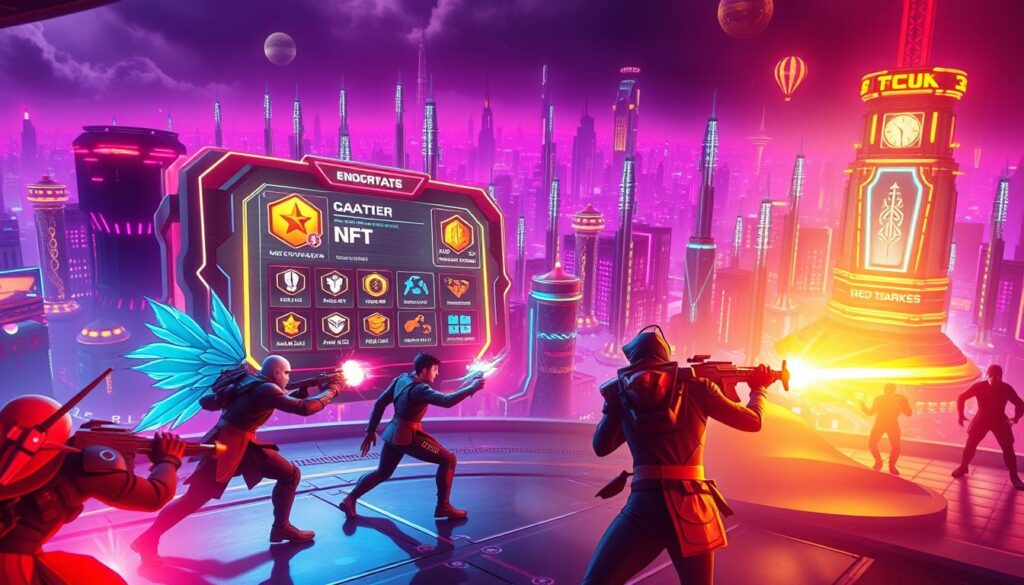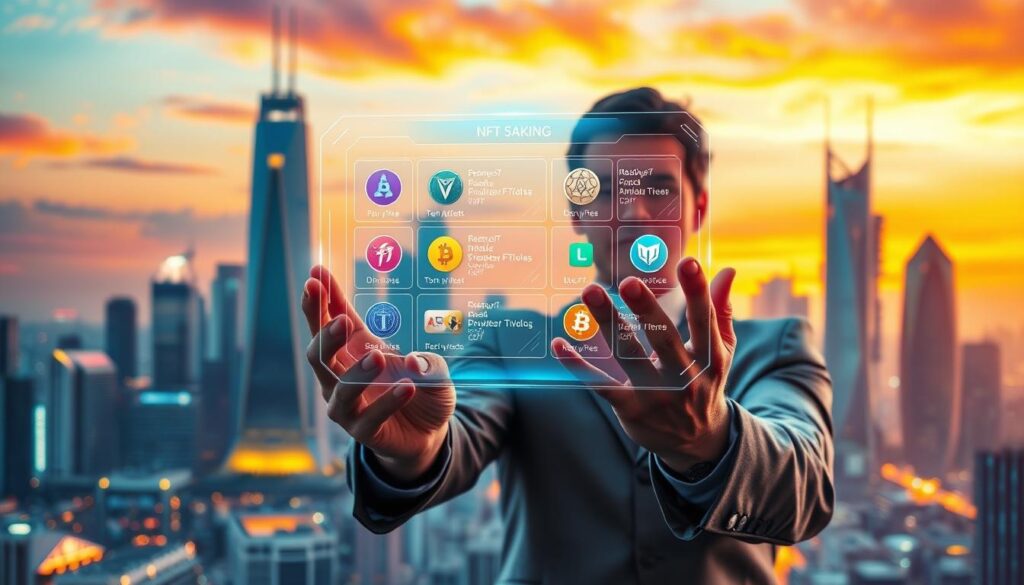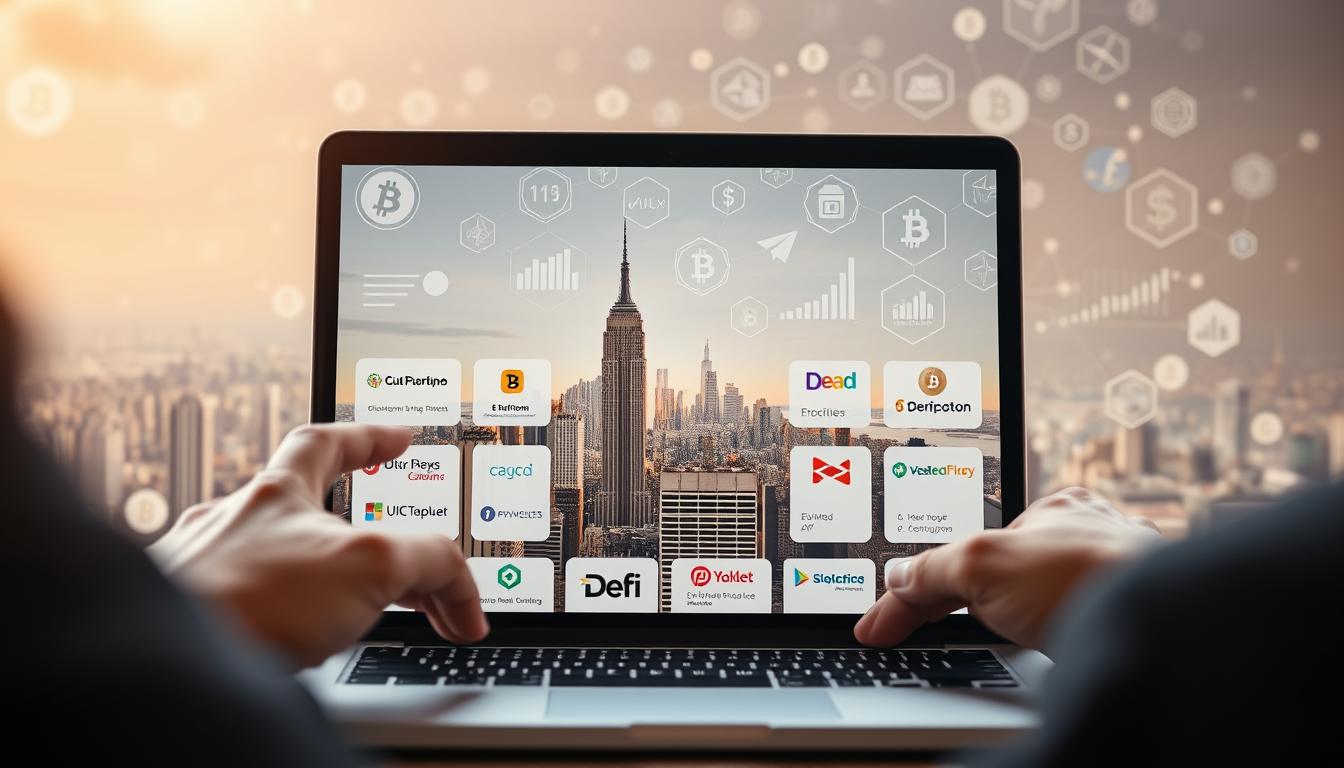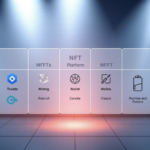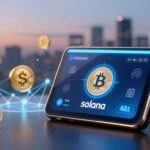Now Reading: Dynamic NFTs: Revolutionizing the NFT Landscape
- 01
Dynamic NFTs: Revolutionizing the NFT Landscape
Dynamic NFTs: Revolutionizing the NFT Landscape
Non-fungible tokens have exploded into mainstream culture, featured in major news outlets and embraced by celebrities. But a new evolution is here: dynamic NFTs. Unlike traditional static tokens, these adaptive digital assets change based on real-world data, user interactions, or predefined conditions.

This shift unlocks possibilities far beyond collectible art. Imagine gaming items that level up with achievements or concert tickets that update with exclusive perks. By integrating blockchain technology with external data sources, dNFTs bridge the gap between digital ownership and real-world utility.
The innovation lies in programmable smart contracts. These self-executing agreements enable features like automatic rarity adjustments or event-triggered transformations. For example, sports memorabilia tokens could update stats after a record-breaking game. This adaptability makes them ideal for real-world applications across industries.
Key Takeaways
- Dynamic NFTs represent the next evolution of blockchain-based digital assets
- Programmable features enable automatic updates based on external data
- Major use cases span gaming, ticketing, and physical asset tokenization
- Smart contracts and oracles power real-time adaptability
- Creators gain new tools for interactive experiences
Overview of Non-Fungible Tokens and Their Evolution
Unique digital assets built on blockchain networks are reshaping how we define ownership in the digital age. Unlike cryptocurrencies, these tokens represent one-of-a-kind items through distinct identifiers and smart contracts. This system allows creators to mint verifiable proofs of authenticity for anything from artwork to in-game items.

Understanding NFTs Versus Static Tokens
Traditional non-fungible tokens use fixed metadata that never changes after creation. A digital painting’s tokenID and contract address remain permanent, acting like a certificate of authenticity. This approach works well for collectibles and art, where scarcity drives value.
Static tokens dominate markets like play-to-earn games and digital art platforms. Artists benefit from immutable records that prevent unauthorized copies. However, these tokens can’t adapt – a character’s armor in a game stays the same forever, even if the player upgrades it.
How Innovation Led to Adaptable Tokens
The limitations of static models sparked demand for smarter solutions. Developers began exploring ways to let tokens evolve while keeping their core uniqueness. This shift mirrors how physical collectibles gain value through use, like a signed baseball that updates with player achievements.
Blockchain’s programmable nature made this possible. By linking tokens to external data sources, creators could build assets that respond to real-world events. This evolution bridges digital ownership with interactive experiences, setting the stage for more complex applications.
Dynamic NFTs: Revolutionizing the NFT Landscape
Digital collectibles are breaking free from their static origins. Unlike traditional non-fungible tokens, next-gen versions adapt like living files. Their secret? Smart contracts that rewrite the rules of ownership.

The Shift from Fixed Metadata to Adaptive Assets
Static NFTs lock content permanently – like a framed painting. dNFTs act more like apps. Their metadata evolves through real-world triggers. A gaming sword might glow brighter after defeating bosses. Concert tickets could unlock VIP perks as event dates near.
This adaptability comes from two layers. The token’s core ID stays fixed, proving authenticity. Meanwhile, external data feeds update traits. Think of it as a digital chameleon – same DNA, shifting appearance.
Creators now design assets that grow with users. Hidden features emerge through achievements. Art pieces change colors based on weather data. Sports highlights update stats after record-breaking games. These tokens blur the line between virtual and physical value.
Three ways dNFTs transform metadata:
- Visual upgrades (evolving character designs)
- Behavioral shifts (items reacting to market trends)
- Secret unlocks (exclusive content for loyal owners)
This tech turns collectibles into companions. Your digital asset matures as you interact – not just sits in a wallet. It’s ownership reimagined for the TikTok generation.
How Dynamic NFTs Work: Behind the Technology
Creating adaptive digital assets requires a three-part foundation. Developers combine programmable agreements, real-world data connections, and automatic triggers to build tokens that evolve. This technical framework turns static files into living assets that respond to external conditions.

NFT Smart Contracts and Integration with Oracles
Smart contracts form the backbone of these evolving tokens. Built on ERC-721 or ERC-1155 standards, these agreements handle ownership rules and metadata changes. Unlike basic contracts, they include logic for modifying traits when specific events occur.
Blockchain oracles act as bridges to external data. Services like Chainlink feed real-time information into smart contracts securely. A sports highlight token might update when an athlete breaks records, using verified stats from these data pipelines.
The Role of Chainlink Data Feeds, Automation, and VRF
Chainlink’s ecosystem powers three critical functions:
- Data Feeds: Deliver weather updates, stock prices, or game scores to trigger changes
- Automation: Executes metadata updates without manual input when conditions meet
- VRF: Generates fair random numbers for gaming loot boxes or surprise content unlocks
Together, these tools create autonomous systems. A concert ticket could automatically upgrade perks as event dates approach. Game items might gain abilities through provably random drops. This infrastructure keeps assets fresh while maintaining blockchain security.
Exploring Innovative Use Cases for Dynamic NFTs
Adaptive blockchain tokens are transforming industries through real-time interactions. Their ability to evolve unlocks practical applications that static versions can’t match. Let’s explore how these living assets reshape gaming, art, and physical world connections.
Gaming, Art, and Real-World Asset Tokenization
In gaming, evolving items create deeper engagement. Weapons gain abilities as players complete quests. Armor visuals shift with achievements, making progression tangible. A sword might glow after defeating 100 enemies or unlock special moves in boss battles.
Digital art becomes interactive with adaptive traits. Generative pieces change colors based on weather patterns or market trends. Collectors own artwork that responds to Twitter trends – a Picasso for the algorithm age.
Real-world assets gain digital twins with updatable records. Property tokens auto-update maintenance logs. Car ownership histories show repair dates and mileage shifts. These features build trust in tokenized physical items.
Interactive Experiences and Player Progression
Three groundbreaking mechanics redefine gameplay:
- Augmented reality treasure hunts where tokens unlock in specific locations
- Competitive modes where top players “steal” cosmetic traits from rivals
- Community-driven events that upgrade items when collective goals are met
These systems turn digital collectibles into active participants. A basketball card updates with real-time stats. Concert tickets unlock backstage passes if shared socially. The tech bridges screens and streets, creating assets that live beyond wallets.
Benefits and Challenges of Implementing Dynamic NFTs
Adaptive blockchain assets bring fresh opportunities while demanding careful planning. These living tokens create vibrant ecosystems where digital ownership evolves through user participation and external data. However, their complexity requires strategic development approaches.
Enhanced Engagement and Revenue Opportunities
Interactive features keep users invested longer. A gaming sword might unlock new abilities after 50 wins, while digital art could shift styles based on collector feedback. This adaptability drives recurring interactions that static tokens can’t match.
Creators tap into ongoing revenue streams through programmable royalties. Imagine earning 5% each time a token’s traits upgrade or selling access tiers for evolving content. Brands use these mechanics for loyalty programs, offering exclusive perks as engagement milestones are reached.
Technical and Cost Considerations for Developers
Building adaptive systems costs $50,000 to $550,000 depending on features. Complex smart contracts need rigorous testing – a single bug could break entire collections. Data oracle integration adds ongoing expenses, with services like Chainlink requiring fees for real-time updates.
Security remains critical despite anti-theft advantages. Changing token identifiers help combat fraud, but external data sources create new attack vectors. Teams must balance innovation with stability, ensuring upgrades don’t compromise user experience.
Leveraging External Data and Smart Contracts
The magic behind adaptive tokens lies in their ability to tap into real-world information streams. Blockchain oracles like Chainlink solve a critical challenge: connecting sealed blockchain environments with live external data sources. This integration turns static digital items into responsive assets that mirror real-world changes.
Automated Metadata Updates Based on Real-Time Data
Smart contracts become supercharged when paired with verified external inputs. Chainlink’s decentralized network acts as a secure bridge, feeding verified information from APIs and sensors directly into blockchain agreements. These triggers automatically modify token traits when specific conditions occur – no human intervention needed.
Four common data types power these transformations:
- Financial metrics: Tokens tied to stock prices or crypto values
- Environmental sensors: Art that shifts with weather patterns
- Sports analytics: Collectibles updating with player stats
- IoT devices: Property records syncing with maintenance logs
Real estate tokens demonstrate this power. A digital deed might auto-update with renovation permits or valuation changes. Sports memorabilia tokens could unlock exclusive content when athletes reach career milestones, using verified league statistics.
Developers follow three best practices for reliable systems:
- Choose oracle networks with proven accuracy records
- Set clear trigger thresholds to avoid false updates
- Implement backup data sources for critical applications
This infrastructure creates living assets that stay relevant through market shifts and real-world events. As data networks expand, adaptive tokens will increasingly reflect our ever-changing physical environment.
Innovative Examples and Success Stories in the NFT World
Real-world applications show how adaptive tokens create lasting value. From sports to digital art, these projects prove programmable assets can redefine engagement.
Game-Changing Sports Collectibles
LaMelo Ball’s Gold Evolve tokens made history. When the basketball star won Rookie of the Year, Chainlink data feeds triggered visual upgrades. Eight unique player stat trackers now serve as blueprints for athlete-focused dnft projects.
Evolving Storytelling Formats
Regenerative Resources’ film tokens grow with each sale. Five short films unlock new scenes when bought or resold, creating layered ownership experiences. This approach turns collectors into story collaborators.
CryptoKitties demonstrated inheritable traits years before current innovations. Spells of Genesis cards adapt through community events, proving early dnft concepts work at scale. These examples showcase a world where digital items mature through use.
FAQ
What makes adaptive digital collectibles different from traditional ones?
Unlike fixed tokens, adaptive assets evolve using smart contracts. Their metadata updates based on predefined rules or real-world data, like sports stats or weather changes. This creates interactive experiences beyond static art or text.
How do blockchain-based tokens integrate live data updates?
Platforms like Chainlink connect smart contracts to external APIs. For example, a basketball-themed asset might pull player performance metrics. Automation tools trigger changes without manual input, keeping the asset’s traits current.
Can adaptive tokens be used in gaming ecosystems?
Yes. Games like Axie Infinity use evolving traits to reflect in-game achievements. A character’s armor might upgrade after completing quests, stored directly on-chain. This boosts player loyalty through personalized progression.
What challenges exist when building updatable blockchain assets?
Developers must balance complexity with gas fees. Frequent metadata changes require efficient code. Tools like IPFS help store mutable data off-chain, while Layer-2 solutions reduce transaction costs.
How does Chainlink’s VRF enhance rarity in digital collectibles?
The Verifiable Random Function (VRF) generates provably fair randomness. Projects like LaMelo Ball’s NFT collection use it to assign rare traits, ensuring transparency. This builds trust in limited-edition drops.
Are there real-world applications beyond art and gaming?
Absolutely. Tokenized real estate can reflect market value shifts. Carbon credits might update based on environmental impact data. Brands like Dolce & Gabbana use them for phygital fashion tied to user activity.



